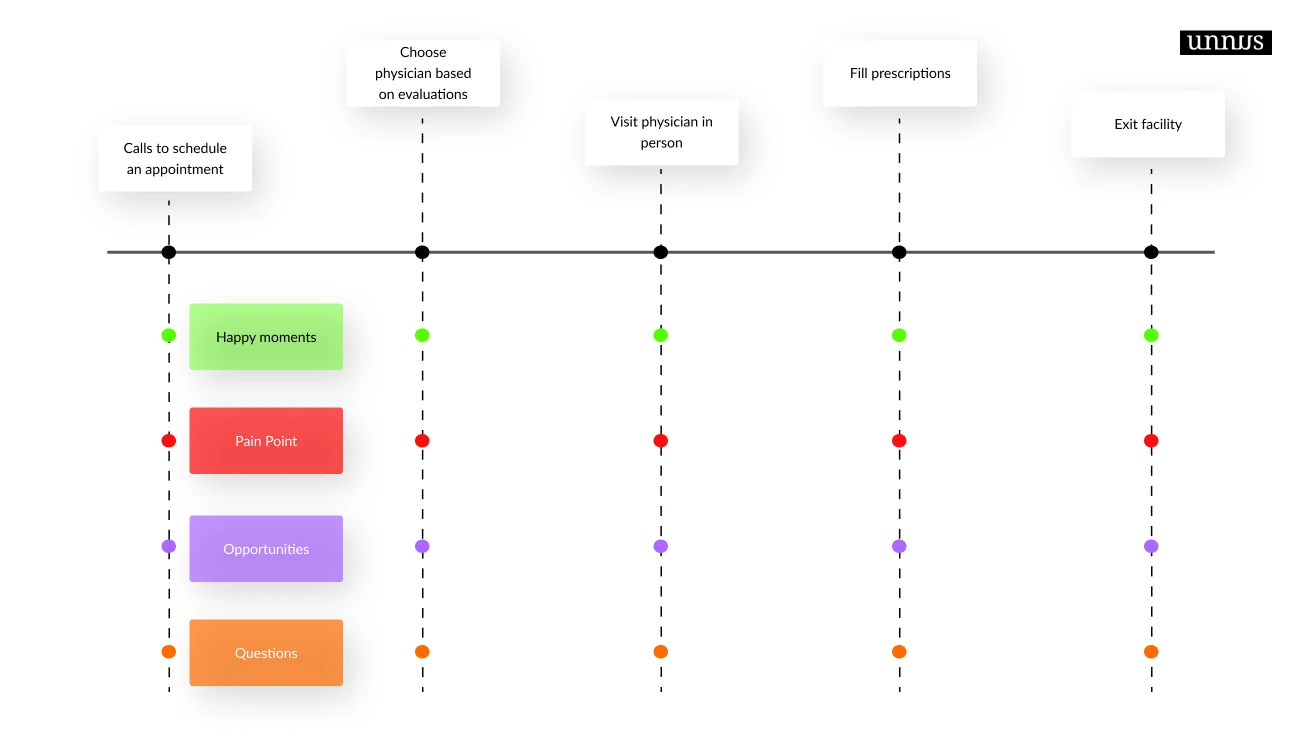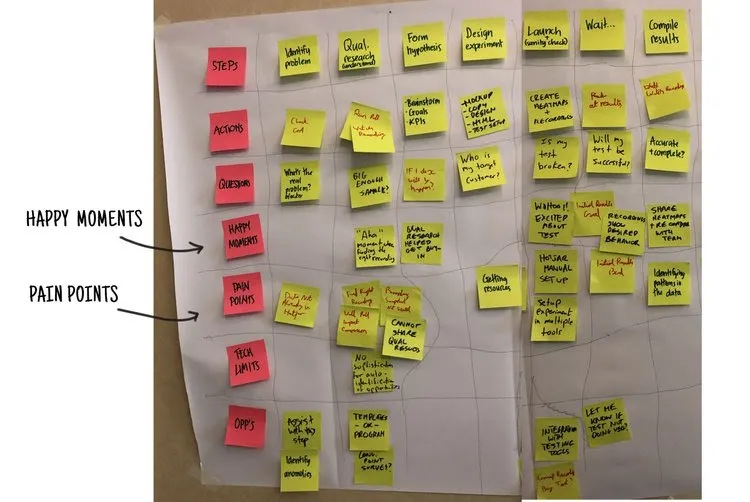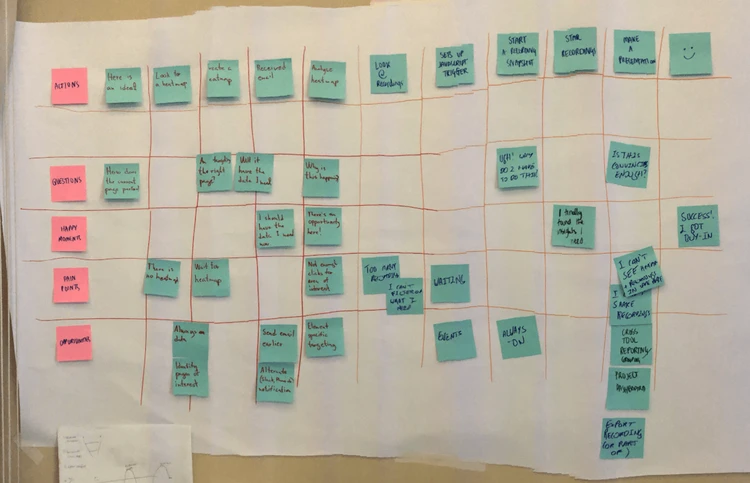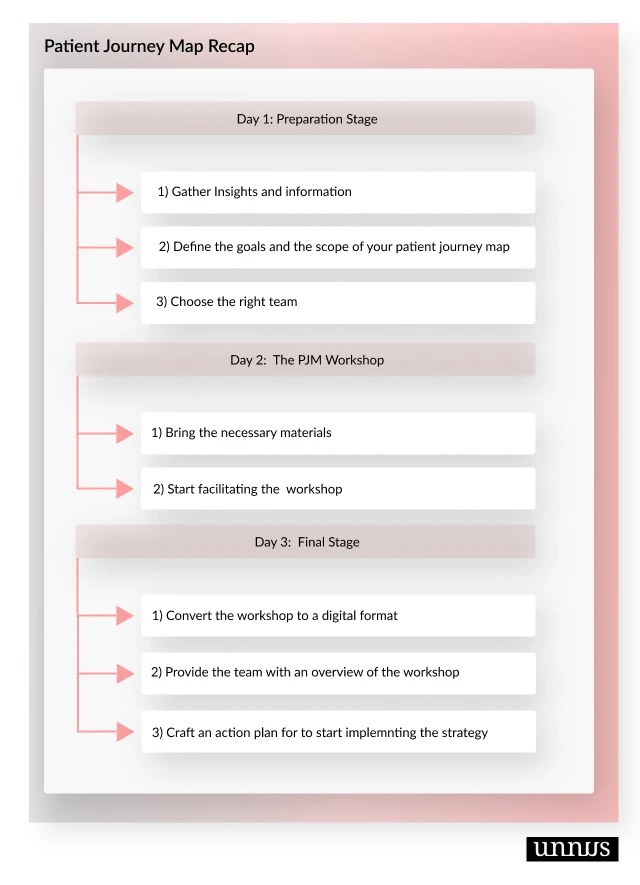Patient Journey Maps are the secret ingredient to a thriving medical business. Let’s discuss how to implement this strategy for your practice in under 3 days.
Imagine you have the ability to hand-craft the perfect patient experience, tailored specifically to your brand. An experience that skyrockets patient retention, doubles your profit margins and creates cult-like loyalty to your medical business.
This is exactly what I’ll share with you today. We’ll go through what are patient journey maps, how to use them, and how they can catapult your practice to the next level.
Other topics I will discuss are:
- What is a Patient Journey?
- What is Patient Journey Mapping?
- What are the benefits of this strategy?
- Step-by-step process to implement your patient journey mapping workshop
- Examples of patient journey mapping
- Free patient journey mapping templates to use
- The secret to a fruitful patient journey map
Let us dive in.
What is a Patient Journey?

A Patient Journey (A.K.A customer journey) is a series of events the patient goes through from his/her first interaction with your medical business up until post-treatment. It outlines every touchpoint (point of contact) the patient comes across during the whole patient experience.
What is a Patient Journey Mapping?
A Patient Journey Mapping (PJM) is the act of tracking, optimizing, and enhancing all of the events that happen during the patient journey. Think of it as creating a map to the whole patient experience and proactively looking for hidden issues across all of your touchpoints.
What are the benefits of patient journey mapping?
There are endless benefits to patient journey mapping. So let’s check some of the important ones.
1) Lets you uncover the blind-spots in your medical business
The most wicked, money-draining issues we face are the ones that hide in plain sight. It’s easy to get tunnel-versioned on the “obvious” and skip past critical parts of your business. This is where patient journey mapping comes into play. It hones in on the easy-to-miss spots in your practice and extracts the invisible layers of hindrances.
This way you make sure that your practice growth is not held off by small and hard to pinpoint bottlenecks.
2) It allows you to craft a personalized patient experience
A great benefit of patient journey mapping is that it lets you overhaul the whole patient journey the way you want it. It enables you to sketch the perfect patient experience based on what you want the patient to feel, experience, or know. This is an opportunity for you to fully tailor every aspect of your medical business to be personalized and boost their retention.
3) It skyrockets patient retention
Due to the enhanced communication and personalization in the patient experience, patient retention will soar. Patient journey mapping enables you to better connect with the patient and sympathize with their state throughout the treatment experience. This way of communication with the patients shrinks the “psychic distance” between the patient and your medical brand. Therefore building stronger relationships and affinity for your practice.
4) It increases profit and accelerates your medical business growth
According to recent research by Aberdeen Group , businesses that perform customer journeys see exponential growth year after year. Those growth spikes include:
- 18X faster average sales
- 56% up-sell revenue
- 10X improvement in customer service costs
- 5X greater revenue from customer referrals
- 54% greater ROI (return of investment)
These unmatched growth results are the outcome of a great journey mapping. Enhancing your patient experience from start to finish will be a fruitful endeavor in terms of profit-growth.
5) It provides alignment among your staff
Patient journey mapping is a collaborative strategy by nature. Key stakeholders need to attend the workshop to see the bigger picture of the patient experience. This collaborative environment will align all of your team under one umbrella, ensuring that everyone is on the same page and vibrating at the same frequency. This will create consistency and harmony between all of your team which will result in a seamless experience for your patients.
Step-By-Step Process: how to create a patient journey map:
Now that you know the importance of the patient journey, let’s dive into the process of how to implement it with your medical business.
From our experience, the process usually takes between 2 days to 3 days. It shouldn’t take more than 3 days to fully complete your patient journey.
Let’s go through the stages one by one.
Day 1: Preparation Stage
The patient journey map is as good as the preparation behind it. On the first day, you’ll need to finish the following critical tasks:
1) Gather Insights and information
In this phase, you’ll start by collecting important data points that will help you during your patient journey mapping workshop. If you’re not sure what insights to gather, consider the following:
- Information about the existing patient base.
- Who’s the target patient your practice or hospital attracts? E,g: middle-aged moms, C-suite executives, or maybe you’re cosmetic service and most of your patients are image-aware people like actors, politicians? If you don’t have an exact patient base, you can write down the ideal patients that you want to work with.
- Any relevant data from customer service chat logs, emails, or even anecdotal information from support, marketing team, or about the issues patients usually experience
- Online presence data
- If your practice brand is active online, you might want to check data from analytics tools like Google Analytics or Facebook ads if you’re running digital advertising campaigns. That can give you some insight into what is happening across your online touchpoints
- Patient testimonials and reviews.
- Gather your testimonials from the patients, good and bad. This will help us understand the mind of your patient and what he thinks about your brand.
Don’t get caught up in this phase too much. The aim here is to capture rough ideas about the patients and their thoughts towards your brand. From our experience, we’ve found that large amounts of data do not fundamentally change the first hypothesis about the patient base.
2) Define the goals and the scope of your patient journey map
Defining the goals and objectives of the workshop is key to its success. It ensures that you’re on the right track and everyone is on the same page. It also makes it easy for you to measure the success of the strategy by checking back and seeing the progress that has been made towards the end goals.
Here are some questions to ask yourself when defining the scope of the workshop:
- What are the key aspects of the medical business you want to tackle?
- What are the desired outcomes you want out of this workshop?
- Do you have any hypotheses you want to confirm by performing a patient journey map?
- What are the ultimate results and end goals you’d like to achieve after acting-out on the patient journey map?
Answering these questions should give you a head start to defining the scope of the strategy.
3) Choose your team
Having the right people around when conducting PJM is important to a fruitful workshop. On the other hand, choosing too many people or the wrong team can hurt the outcome of the strategy.
From our experience 2-6 people are a manageable number. Any more than that and it will hinder the process of the workshop.
However, the key element here is to choose one stakeholder from each part of your business. Or if you’re a larger facility, a stakeholder from each department is a great option. Make sure that everyone in the team has gone through the scope and the goals of the PJM.
Day 2: The Workshop Stage
Now that everything is prepared, let’s dive into the details of the PJM and how to run the workshop.
Phase 1: Bring the necessary materials
There are two ways to run the workshop: online or in person. Both are fine but for the sake of convenience, I’ll use digital platforms to perform the PJM.
You can invite your team via Zoom and use collaborative virtual whiteboards like Miro or Mural . These online workplaces will make it easy for your team to join the workshop from the leisure of their homes.
But if you decide you’d like to run the workshop in person, the same principles will apply. But you’ll need to prepare stationery tools like pens, post-its of different colors, masking tape, and large sheets of paper to hang on the wall.
Phase 2: Start the workshop
This is the interactive part of the process. It takes roughly 1.5 to 2 hours to finish the complete first draft of the map.
Introduction ⏰ [5-10 minute]
- Introduce the exercise to the participant and explain why you’re doing this
- Explain the benefits of this exercise and the end goal of the PJM
- Recap the insights you gathered from your data and explain who your patient-base is.
Mapping Exercise ⏰ [60-90 minute]
The first thing to do is to present the patient’s journey map. The map consists of different stages, each stage contains specific steps the patients go through. Our goal here to hone in on these steps and pose questions regarding this particular step
- What are the questions they might be asking
- Are there any happy moments in this step?
- What are the pain points that the patient might experience?
- What opportunities could enhance this particular step?
Here’s roughly how the digital version of the patient journey should look like:

If you’re running the workshop in person, the PJM might look like this:

For each step ask participants to use sticky notes to answer the above questions. At the end of the exercise you should have something like this:

After you finish the first draft of the map, discuss with your team the observation and insights they made. It’s important to create a sense of collaboration during this exercise. Your team should feel involved and invested in the success of the strategy.
Wrap up the workshop ⏰ [5-10 minute]
After everything is said and done, offer a quick recap of what everybody has done today. It is important to inform the participant as to what’s coming next.
Day 3: The Final Stage
Now that the map is finished, all is left is to finalize the Map and provide a concrete plan for the whole team to start acting on.
- If you run the workshop in person, make sure to convert the map, insights, and notes into a digital format. This will make it more accessible for the whole team to go back and see the PJM
- Provide the team with a video or write-up about the strategy and the purpose behind it. Make sure to include how this can benefit the whole team and the brand overall
- Turn the insights and the results you got out of the PJM into an action plan. This plan should include what to do next at each step of the patient journey and what are the things that need to change. This is a critical part of the PJM. You want to act out the strategy to start seeing improvement and profit results for your medical business.

Patient Journey Example
I’ll share with you a recent example of the patient journeys map we conducted with our client so you can see roughly how the first draft of the map should look like.
Hospital Patient Journey
Here is Healthier™ ’s PJM, an Orlando-based community hospital:
For full screen click here or click on see board
The results of performing PJM
- Healthier profit margin nearly doubled from the first year of acting out the PJM
- The hospital start now is acquiring 4X the volume of last year
- The hospital patient retention rate increased from 12% up to 18% within the first year
The secret to a result-driven patient journey map
The Patient Journey Map is as good as the action-plan behind it. The last thing you want is unactionable PJM. You need to provide your team and your stakeholders with an action-based plan that goes through the next steps.
The steps that will redeem the pain-points of your patients, take advantage of the opportunities and make an unforgettable patient experience.
If you’re looking for help to facilitate your workshop or perform a patient journey map, drop me a message . I’d gladly help you.


